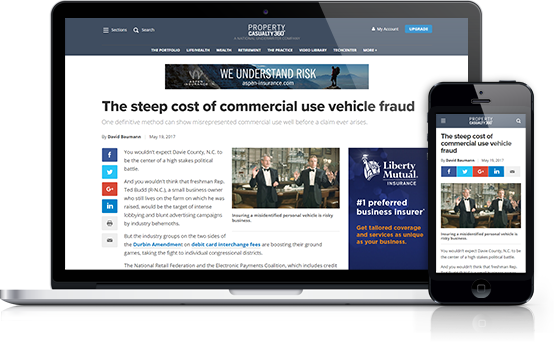 Despite significant advances in technology and the wealth of data available and ripe for advanced analytics tools, many carriers still rely on decades-old legacy systems for policy management. It’s a costly conundrum. The way in which carriers manage their policies is at the center of their risk exposure and subsequently, their profitable growth. At the same time, a widely quoted study by PwC found that on average, 70% of a carrier’s IT budget goes to maintaining their legacy system.
Despite significant advances in technology and the wealth of data available and ripe for advanced analytics tools, many carriers still rely on decades-old legacy systems for policy management. It’s a costly conundrum. The way in which carriers manage their policies is at the center of their risk exposure and subsequently, their profitable growth. At the same time, a widely quoted study by PwC found that on average, 70% of a carrier’s IT budget goes to maintaining their legacy system.
But legacy systems do more than just eat into a carrier’s budget. They hold carriers back from modernizing and staying competitive, keeping them from tapping data that could help inform decisions and better assess risk. New and always-evolving industry regulations require constant changes to policies, putting additional pressure on old and inflexible systems. And integrations with new technologies? Forget it. With legacy systems, that endeavor is monumentally complex or altogether too difficult to even attempt.
New, updated policy management systems can easily address these challenges and position carriers for future success and compliance. So why are carriers still reluctant to invest in new systems that will support their goals and make them easier and more cost-effective to achieve?
The problem with legacy
One of the biggest reasons carriers stay tethered to their trusty — if not clunky and complex — legacy policy management systems is because of a fear of disruption to their day-to-day operations during the new system upgrade. Depending on the new system chosen, this may be a valid justification, however short-sighted, because in fact, the long-term benefits will far outweigh whatever hours there may be of downtime.
Failing to upgrade leaves carriers in the dust in an ever-changing, competitive market. Legacy systems offer limited data analytics, making it challenging to assess risk and make critical decisions to mitigate it. They also lack flexibility to integrate with new systems that could help carriers grow their business and increase profitability. Finally, these systems are slow in processing policy applications, claims and underwriting, which results in operational inefficiencies and customer dissatisfaction.
Updated policy management is good for one, good for all
With updated policy management systems, carriers see benefits across operations, risk management and innovation. They streamline and automate manual and time-consuming tasks, such as data entry and document processing. This reduces operational costs, minimizes errors and improves overall efficiency. When it comes to risk management, updated policy management systems can help carriers better assess and manage risk with real-time data on insured assets, which leads to assessing risks more accurately and therefore, growing their profits.
Investing in new policy management systems not only benefits individual carriers, it positively impacts the entire industry. The ever-growing landscape of technology is foundational to the creation of innovative new products and services, which better serves insurance customers. That, in turn, directly impacts the stability and success of carriers, and therefore, the entire industry.
PolicyPort®: A better way to manage policies
When selecting a new policy management system, carriers should look for a new system that offers flexibility, configurability, a user-friendly interface and real-time updates — all supported by a team of professionals that are well-versed in the insurance industry. That’s where Team Focus, through their subsidiary Focus Technologies, comes in. Not only do they understand the reluctancy carriers have in taking this risk, they can walk carriers through the steps that will ensure a perfect solution fit. For so many, that solution is PolicyPort®.
Focus Technologies created PolicyPort as a better, faster and more flexible insurance policy management software. Innovative, cost-effective and easy to use, PolicyPort is a SaaS-based policy management system created specifically for carriers. With it, carriers can increase speed-to-change and speed-to-market, while also mitigating their risk exposure at a granular level and with real-time integrations to reinsurance partners. As a result, carriers remain stable and can increase their profits and thrive. PolicyPort allows carriers to adapt the system to their specific business needs with a combination of rapid-response and modern toolsets required to succeed in the insurance industry. And, for those worried about downtime during the upgrade, PolicyPort functionality can be rolled out gradually, so business still improves while daily operations continue uninterrupted.
For more information and a live demo, please visit us at https://www.focustechnologies.net/products/.










 Copyright © 2024 ALM Global, LLC. All Rights Reserved.
Copyright © 2024 ALM Global, LLC. All Rights Reserved.